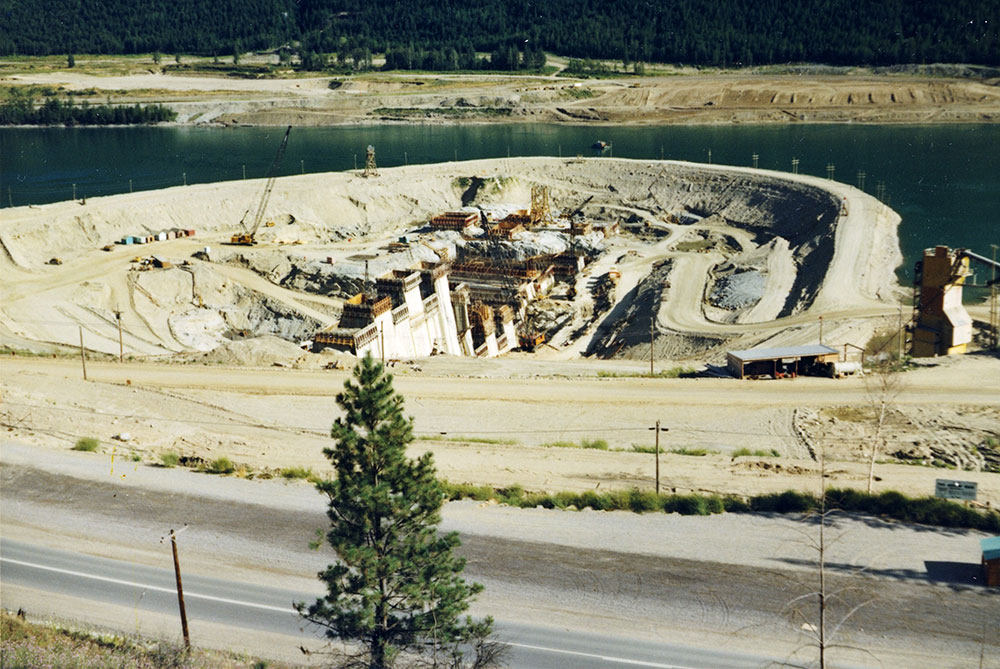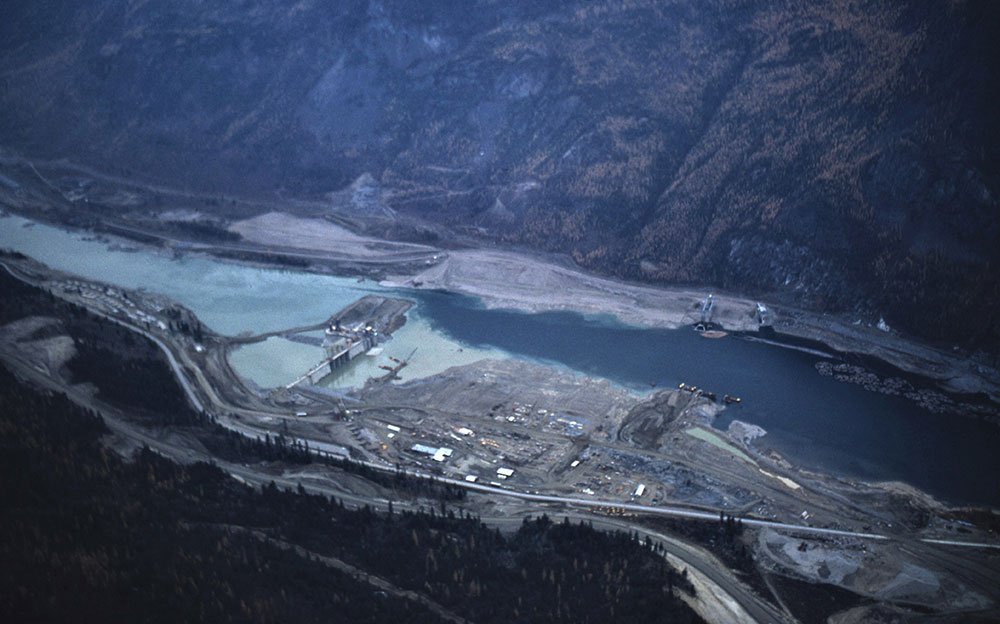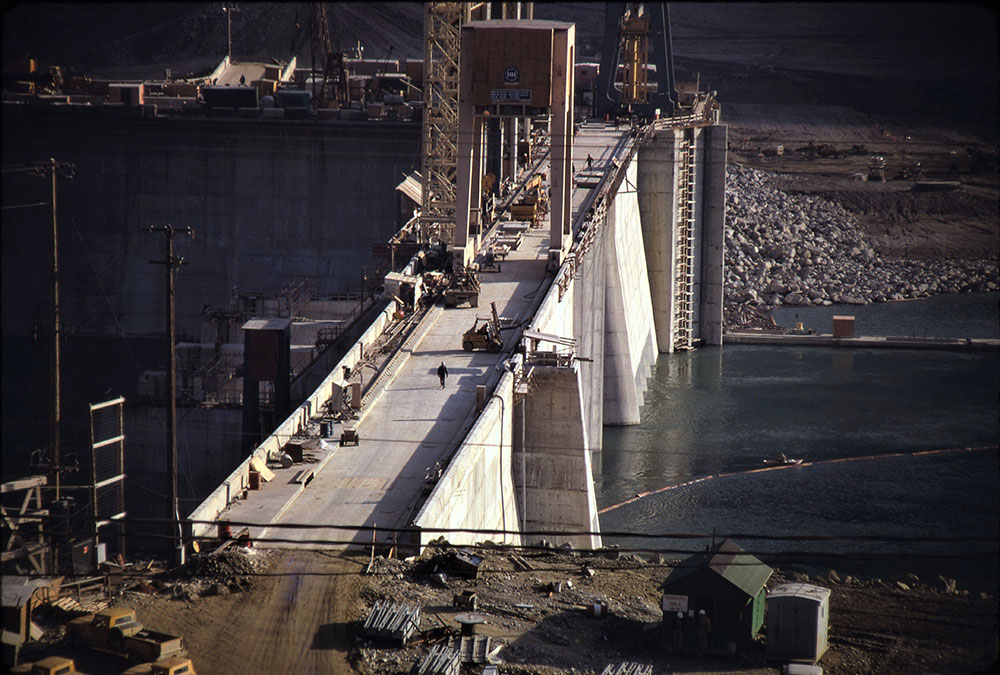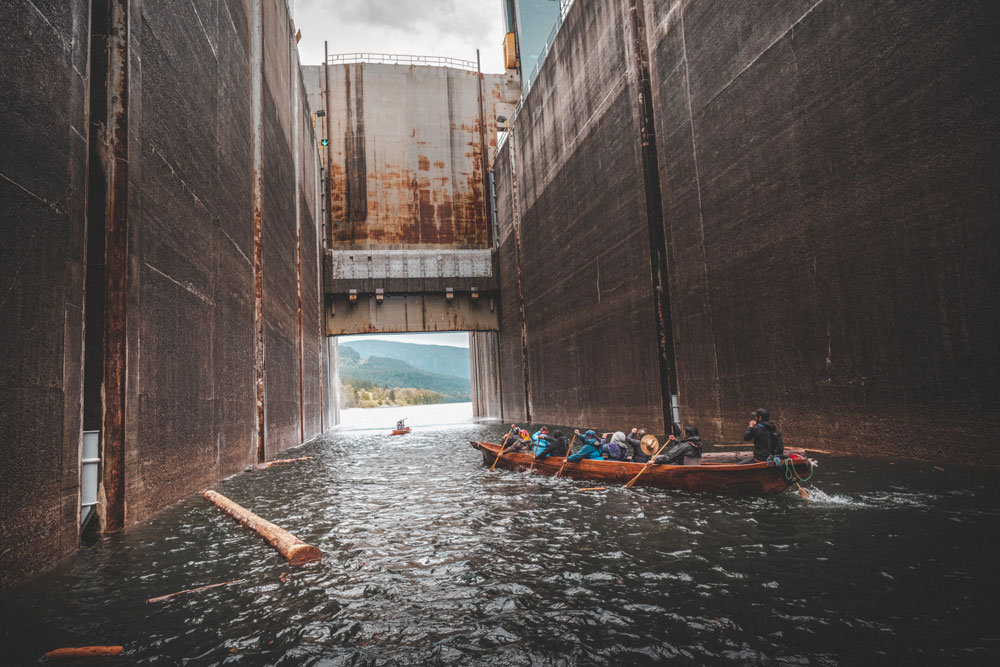Construction of Hugh Keenleyside Dam

Hugh Keenleyside Dam under construction, July 1966. Arrow Lakes Historical Society photograph 2014.026.585. Photographer: Ellis Anderson.
Construction of the Hugh Keenleyside Dam finished six months ahead of schedule. The dam was declared operational on October 10, 1968.
The dam towered 52m high, just upstream from Castlegar. It was initially built as a storage dam, in part to end the annual threat of flood damage in B.C., Washington, and Oregon, and in part to control stored water released to Americans for increased power generation at the Grand Coulee Dam in Washington and other power plants on the mid-Columbia River.

Hugh Keenleyside Dam continues to take shape. December 1967. Arrow Lakes Historical Society photograph 2018.027.9.2. Photographer: Wilf Hewat.
The Hugh Keenleyside Dam controls a drainage area of 3,650,000 hectares and holds back the seasonal snow melt from the Arrow Lakes. The release of the 8.8 billion cubic m (7.1 million acre-ft.) of live storage is controlled by four sluiceways and eight low-level ports.

Construction of the Hugh Keenleyside Dam nears completion, 1968. Arrow Lakes Historical Society photograph 2018.027.9.6. Photographer: Wilf Hewat.
After controversy in the early 1960s over the dam’s location between the log supply and a major mill owned by Celgar, BC Hydro redesigned the dam to allow for the movement of log booms and pleasure boats through the dam.
The Columbia Power Corporation designed a 185 MW hydroelectric powerplant in 2002, to make use of some treaty flows.


